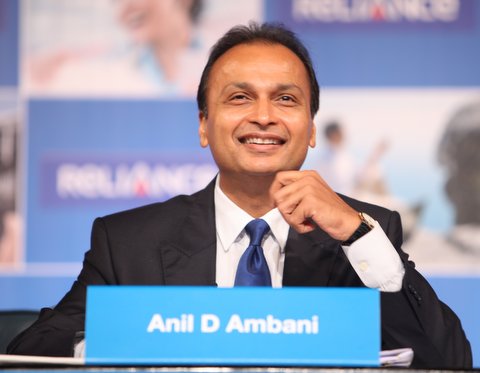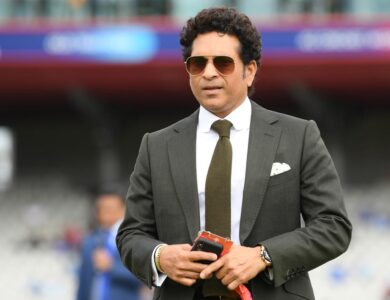
Introduction
Reliance Power is the subordinate firm of the Reliance Anil Dhirubhai Ambani Group or ADAG. It was founded by Anil Ambani in the year 2007. The company was engaged in designing, constructing, and operating power projects in India. The portfolio of this company included energy generated through its power plants sourced from coal, gas, hydro, and renewable energy. However, its sojourn has been marked by aggressive growth plans, financial troubles, regulatory woes, and a sea change in the energy scenario in India. While seeing the journey of Reliance Power, one learns lessons which teach how bad the problems had turned to the power sector in India and how one of the country’s most important industrialists managed the problems.
The Vision: Lead the Energy Sector in India
Reliance Power, as visualized in the vision of Anil Ambani, shall enhance the resource base of the firm and shall utilize group strength and capabilities toward the future prospects by utilizing the resources to generate power in India and thus shall initiate implementing several gigantic power projects with a collective generating capacity of over 40,000 MW, through the gamut of different kinds of energy. This ranges from thermal power-that is, coal and gas-to hydroelectric sources and renewable energy from the sun and the wind.
The Indian economy was booming in the mid-2000s, where the industry and infrastructure and the growing percentage of the urban population were growing at a fast pace and were demanding their share of energy consumption. In this background, Reliance Power aimed to be a new challenger that emerged as a major player in diversified energy solutions for this rising demand.
IPO and Rise to Glory
In 2008, Reliance Power launched the biggest IPO ever in India at about $2.8 billion, or INR 11,560 crore. This was an apt way to come to the end of a public that had reached out to believe that Anil Ambani could continue in the footsteps of his father Dhirubhai, who had turned Reliance Industries into one of the most powerful conglomerates in India.
However, the IPO for Reliance Power seemed to promise a bright future to its investors, as it could be deemed an ever-impressive return-defying one, since then plans for gigantic power generation projects were announced. Indian government policy at that point was set towards privatizing and expanding the energy sector; hence, the corporation got an impression that it might be a strategic move for Reliance Power.
Critical Projects and Ambitious Targets
It started with ventures on massive coal-based power plants and flagship projects like Sasan Ultra Mega Power Project in Madhya Pradesh and Krishnapatnam UMPP, Andhra Pradesh represented some of the biggest venture. All these projects together would add up to an installed capacity of well over 8,000 MW, thus some of the biggest thermal power projects in the country.
This thermal power was just a starting point, and Reliance Power had also ventured into the renewable sector with hydroelectric projects in Arunachal Pradesh and solar power projects in Rajasthan. Ambitious targets were promised to make 25,000 MW of power by 2015 with a hope to emerge as one of the most considerable power producers in the country.
Challenges and Financial Trouble
Striding off into quite ambitious beginnings, Reliance Power came to face challenges from all sides-shortly both within and from the outside. The main causes for the hurdles were delays in projects, rising cost overruns, and apprehensions about fuel supplies. Some of these were the broad fears and glitches found widespread in India’s power sector; wherein very many private and public companies were facing delays in land acquisition, environmental clearances, and a long-drawn process for project approvals, among others.
UMPP
Though Sasan UMPP got operational towards the end of the year, it had also seen some delays and overruns, which affected the performance of the company. Krishnapatnam UMPP was sent into a cold coma as international coal prices soared high wherein imported price became non-viable for importing the volume of coal agreed upon at the time of entering into the agreement. The company resorted to litigations and renegotiations of agreements to save the project and then shelved the project.
One major substitute with which the company had to contend was fuel supply as it employed coal. Shifts in government policies, prices, and logistics brought the coal supply chains to a standstill bringing the project timelines to a grinding halt. Coal India Limited is a company that controls most of the nation’s coal reserves; therefore, increased demand could not be met, and an acute shortage ensued affecting not only Reliance Power but also other power companies.
Financial troubles began to accumulate as the projects of Reliance Power were experiencing delayed revenues, and the same was finally coming in at an even slower pace. The high leverage had sunk its boat with an increase in the interest rate. By the mid-2010s, Reliance Power was no longer in a position to service its debt, and this began the… downward spiral for the small energy empire of Anil Ambani.
Debt Crisis and Debt Restructuring
Debt trap grew perilously for Reliance Power that it forced the company to seek support from banks and creditors by debt restructuring. Reliance Power has accumulated, as of 2019, an astronomical amount of billions of dollars in debt, and in that year, the parent company, Reliance Infrastructure, faced financial distress.
To that end, Anil Ambani initiated a spree of asset sales and restructurings that were to reduce liabilities. The most intense of these were the demands in its portfolio for the liquidation of non-core assets in transmission and road projects. Such maneuvers remained insufficient as shares of Reliance Power tumbled from their IPO peaks down to the ground when investors began raising genuine concerns about future viability.
Going towards Renewables and New Strategies
This scenario, whereas Reliance Power’s thermal power business was in too much trouble, the overall world energy scenario was turning towards renewals. Observing this trend, the company began to emphasize more on renewable forms of energy like solar and wind power energy. It became slow and drifted along when it was already a debt-ridden company.
The company has been strengthening finances, cutting costs, and repositioning itself in the renewable energy space for the last couple of years. Though efforts by the Indian government to promote renewable energy under its National Solar Mission and various wind energy programs were some relief, the company was facing an onerous market given its debt situation.
Conclusion: The Future for Reliance Power
Reliance Power under Anil Ambani: Trying times, indeed. Some hectic: high-scale ambitions, big challenges, and an energetic volatile energy market. It has built large power projects and garnered some successes, but piling debt, fuel supply issues, and delayed projects have dug pretty deep holes for the financial health and market standing of the company.
At a more general level, an ever-increasing trend of India’s plan as well as globally towards renewable energy presents new opportunities for Reliance Power in particular as more and more governments and investors strive toward a cleaner, sustainable future. But realizing that opportunity to its fullest would still depend on debt management of the company, efficient execution of projects, and investor confidence.
Reliance Power will, in the future, have to work within the flexibility of the unfolding landscape in energy and effective management of resources mainly in renewable energy fields. Being massive setbacks notwithstanding, lessons learnt from earlier mistakes would position it well for future growth if well managed.




